Payouts for killings and injuries plummet for Bay Area police departments undergoing reforms

Police agencies with oversight pay less in civil penalties
Police agencies that have independent oversight are paying much less in civil penalties for injuring or killing people than many departments left to police themselves, a KTVU investigation has found. Evan Sernoffsky reports
OAKLAND - In one case, a man experiencing a mental-health crisis hanged himself after deputies shackled him to a jail door. In another, five police officers fired 26 rounds at a stabbing suspect as he shuffled along a wall holding a knife. And in another case, an officer chased an unarmed bicyclist into an alley before fatally opening fire during a scuffle.
These are just some of the use-of-force cases by Bay Area law enforcement officers that resulted in millions of dollars in civil payouts over the last half-decade.
The most controversial incidents prompted departments to undergo sweeping reforms, limiting when officers can use force and empowering independent oversight. Many of the cases, though, resulted in no discipline for the officers, who were cleared by their departments and prosecutors.
Now, a KTVU investigation has found that Bay Area law enforcement agencies engaged in long-term reform efforts -- including having independent oversight -- are paying much less in civil penalties in recent years for injuring or killing people than many departments left to police themselves.
In fact, two Bay Area cities that once paid out the most -- Oakland and San Francisco -- showed stunning turnarounds after taking on some of the most comprehensive reforms in the country. The numbers, advocates say, are a telling metric as calls for police accountability continue to mount nationally following high-profile cases like the killing of George Floyd in Minnesota.
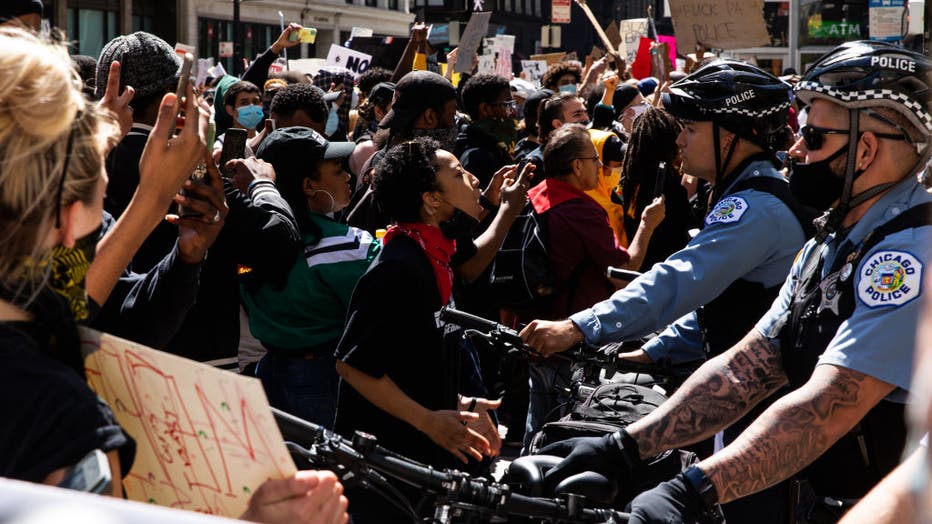
Protesters and Chicago Police clash during protests following the killing of George Floyd by Minneapolis police on May 30, 2020 in Chicago, Illinois. (Photo by Natasha Moustache/Getty Images)
"If you have independent police oversight, then you have more eyes on the department and police tend to behave better," said LaDoris Cordell, a retired judge and former independent monitor for the San Jose Police Department. "If nothing else, if cities are resistant to oversight, this makes the case."
KTVU requested data on money damages -- both negotiated settlements and jury awards -- for excessive force and wrongful death paid by the largest law enforcement agencies in the Bay Area over the last five years. KTVU only used figures associated with cases that were the result of officers using force, not for incidents such as traffic accidents.
The findings revealed: The Alameda County Sheriff’s Office paid the most at $27.6 million, followed by the San Jose Police Department at $17.5 million. Both agencies employ about 1,000 sworn personnel. Vallejo police with roughly around 100 officers, paid $6.5 million -- the highest amount when adjusted for the size of the department. These agencies have minimal or no long-term oversight.
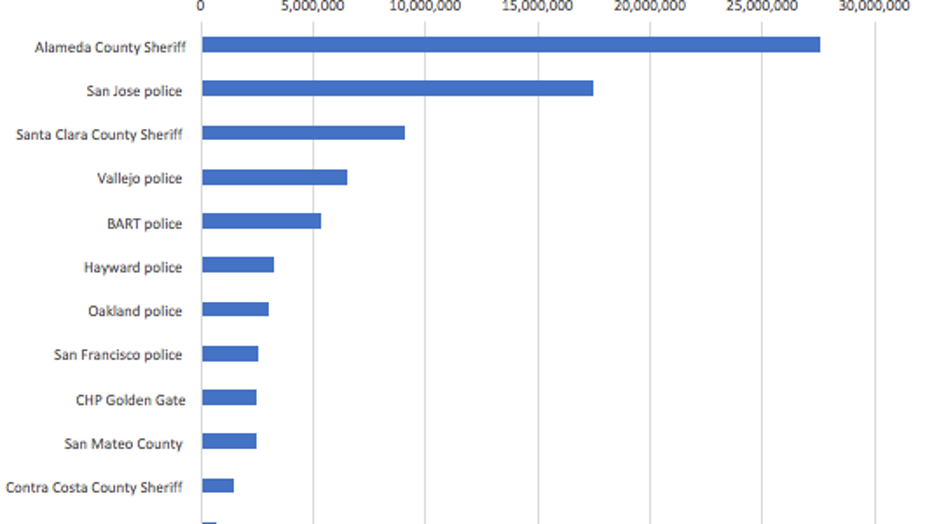
Bay Area police payouts for excessive force and wrongful death from 2015 to 2020.
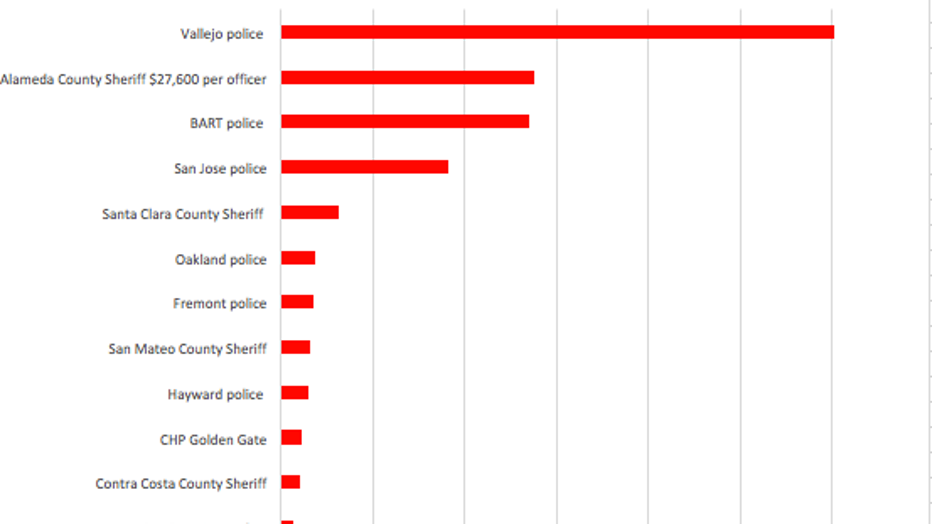
Bay Area police payouts for excessive force and wrongful death per officer from 2015 to 2020.
Two of the lowest-paying agencies were San Francisco and Oakland. The San Francisco Police Department, with almost 2,000 officers, paid $2.6 million while the Oakland Police Department, with close to 800 officers, paid just over $3 million.
But things were much different a decade ago.
In 2011, a KTVU investigation found Oakland police paid $57 million and San Francisco police paid $28 million between 2000 and 2010 -- the two highest in the Bay Area.
But civil rights advocates say these payouts are about much more than the bottom line.
"Behind those dollars, there are people whose lives are lost. There are people who were stopped for no reason. There are people who were beat up and that doesn't do anything to help community relations," said Jim Chanin, a civil rights attorney, who sued the Oakland Police Department in the infamous Riders case two decades ago.
The San Francisco and Oakland agencies have since adopted major reforms, including stricter use-of-force policies, community policing initiatives, anti-bias measures, and both must answer to independent authorities.
Oakland police have been under the supervision of federally appointed independent monitor Robert Warshaw since 2003, following the Riders case, in which citizens reported being beaten and framed by multiple police officers. In 2013, a federal judge appointed a compliance director to make sure the department was meeting its reform objectives.
Then in 2016, Oakland voters approved the forming of the civilian police commission with the power to investigate misconduct and fire the chief.
And last year, the commission fired then-Police Chief Anne Kirkpatrick over the shooting of Joshua Pawlik, who police killed in 2018 after he was found sleeping in someone’s yard with a gun in his hand. Kirkpatrick had cleared the officers. But the police commission and Warshaw both disagreed.

Robert Warshaw is a federal monitor overseeing the Oakland Police Department. Feb. 25, 2020 (KTVU FOX 2)
In addition, Oakland paid $1.4 million to Pawlik’s mother -- the department’s largest payout in KTVU’s analysis. But even with the settlement in Pawlik’s case, Oakland’s is paying little compared to what it used to.
"I go through those figures and say we were the worst and now we have to strive to be the best," said Chanin, whose lawsuit in the Riders case initiated Oakland’s reform process.
Reforms began more recently in other parts of the Bay Area, namely San Francisco.
The city's police force came under review of the federal Justice Department following high-profile police killings, like the 2015 shooting of Mario Woods. He was suspected in a stabbing and was shuffling along a wall and refusing to drop a knife when five officers opened fire, killing him. San Francisco settled the Woods case last year for $400,000.
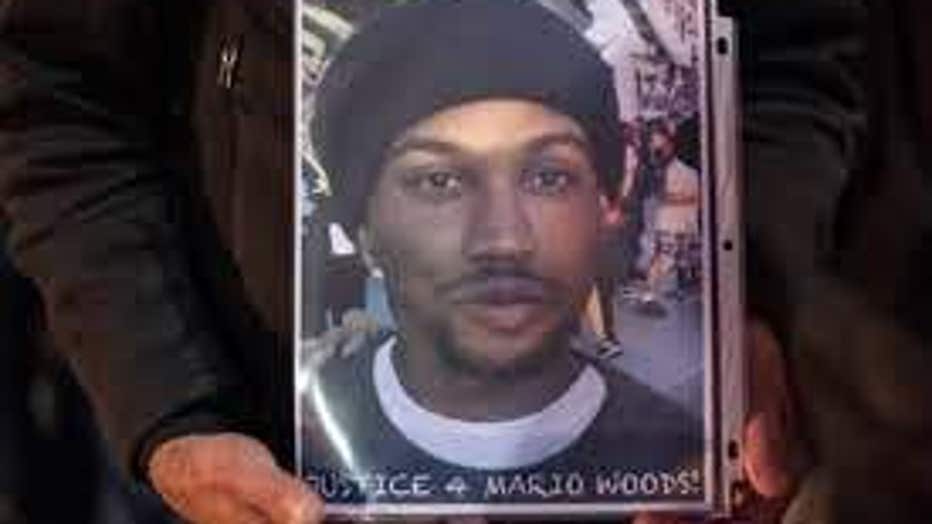
Mario Woods
The Trump administration abandoned the reform program in 2016, so the state Attorney General’s office began overseeing San Francisco’s police department.
The city also has a civilian police commission with the power to discipline officers and an independent watchdog agency, the Department of Police Accountability, which investigates police misconduct and can recommend discipline.
But Oakland and San Francisco's reform programs are unique in the Bay Area.
In contrast, the Alameda County Sheriff’s Office -- which has no independent oversight -- has paid out the most of all the Bay Area departments. The sheriff is elected and the Board of Supervisors has no authority other than control of the budget.
The most recent Alameda County Sheriff’s payout was $5 million to the parents of Christian Madrigal.
The 20-year-old was experiencing a mental health crisis in 2019 and deputies chained him to a cell door at Santa Rita Jail, leaving him there for several hours. Madrigal hanged himself to death on the handcuffs. A lieutenant was fired after Madrigal’s death, but the district attorney declined to prosecute anyone.
Jose Jaime, Madrigal’s stepfather, said the money from the settlement makes him "sick." But with no criminal charges, he said the huge settlement is the only way to hold the sheriff’s office accountable.
"I don’t want the money," Jaime said. "But it’s a sign that they did something wrong."
The payout was the agency’s second-highest in recent history after a $5.6 million settlement paid to Stanislav Petrov. Two deputies allegedly beat Petrov in a San Francisco alley after a chase in 2015 that was caught on video. They were later fired and criminally charged.
In an interview with KTVU, Alameda County Sheriff Greg Ahern said he has recently identified gaps in training and addressed his rank-and-file deputies regarding use-of-force. He said he’s changed the office’s Internal Affairs protocols and expanded de-escalation training.
"Our job is to be that of a protector and a guardian, making sure we are more like the sheepdog protecting the sheep, but every once in a while we’ll have to confront the wolf," Ahern said.
He added that he would be cautious about an outside civilian group with little institutional knowledge overseeing his office.
"We hope that somebody that has some type of law enforcement background or understanding of law enforcement would come out and actually be able to help us instead of just be critical of what we’re doing," he said.
The second-highest figure over the last five years was from the San Jose Police Department. Most of that came from an $11.3 million jury award to Hung Lam, who was paralyzed when officers shot him in 2014 as he held a knife. A jury heard testimony from a retired San Mateo County deputy, who witnessed the shooting and said the officer could have done more to de-escalate the situation.
A jury also awarded the parents of Anthony Nunez $2.95 million. San Jose police in 2016 fatally shot Nunez, who was suicidal and had shot himself, after they were called to his home on the Fourth of July. Police said Nunez pointed a gun at them when they opened fire, a claim disputed by a witness. The officers were later cleared in the shooting.
"We received the money and I was in bed for two months after," said Sandy Sanchez, who raised Nunez. "I didn’t want to spend a penny of it because I knew where it came from."
The family eventually used the money to help buy a house so they could move out of the home where their son was killed.
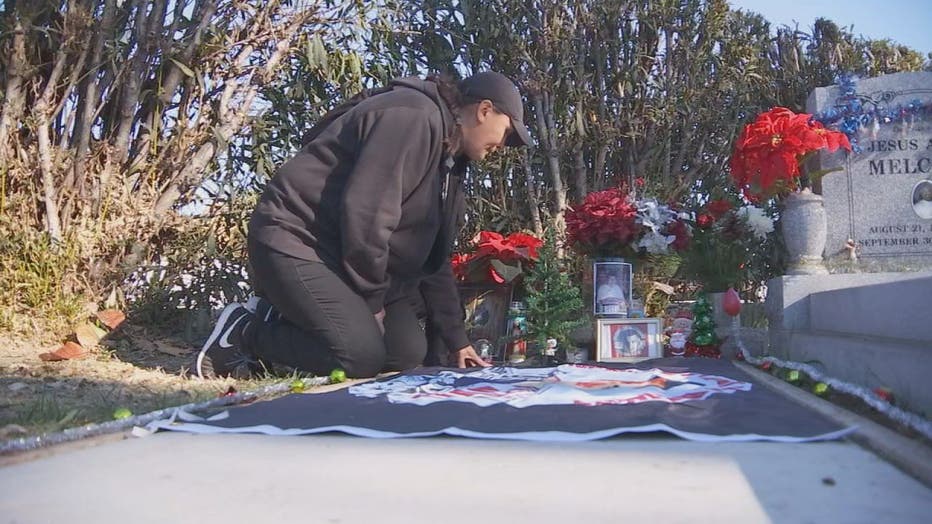
Sandy Sanchez cries over her son's grave at Oak Hill cemetery in San Jose.
San Jose has limited oversight of its police department. Its independent auditor cannot investigate or discipline officers. Voters in November, though, approved Measure G, which will give the auditor’s office the power to investigate police misconduct.
The San Jose Police Department referred requests for comment to the city attorney’s office, which did not comment.
Bay Area attorney Rocky Lucia, whose firm represents rank-and-file officers in use-of-force cases, said civil penalties don’t necessarily signal wrongdoing.
He said that with the advent of body-worn cameras and cell phone video, police are under heightened scrutiny and municipalities may be more willing to cut deals with plaintiffs rather than risk an even larger jury verdict.
"We handle so many of these cases, officer-involved shootings, and for the life of me, I don’t know why they’re settled because the officer did nothing wrong," Lucia said. "But I think the optics are that it was on TV and it was on social media and the video looks bad."
And Vallejo certainly has a large number of controversial cases that were captured on video.
KTVU’s analysis found that the beleaguered police force has the highest dollar payout per officer in the last five years. Vallejo police have killed 19 people over the last decade and 14 officers have been involved in multiple shootings.
The largest payout came with the case of Ronell Foster, who was shot dead by Officer Ryan McMahon during a scuffle in an alley in 2018. The incident was captured on McMahon’s body-worn camera and Vallejo paid Foster’s family $5.7 million. McMahon was later fired.
But Vallejo is still facing more than 20 civil rights claims, which the city manager believes could expose the city to some $50 million in future liability.
The city hired Police Chief Shawny Williams last year, who pledged to reform the department. But under his watch, an officer fatally shot Sean Monterrosa in June. The officer said he mistook a hammer in Monterrosa’s pocket for a gun.
Williams has since agreed to work with the state Attorney General’s office to overhaul the department’s policies and practices.
Monterrosa’s killing, though, has continued to inflame tensions between the small agency and the community -- a rift mirrored in cities around California and beyond.
Cordell, the retired judge, said one way to improve those relations, while also saving money, is to expand police reform throughout the country.
"Every department in the country should have independent oversight," she said. "Police should not be policing themselves."
Evan Sernoffsky is an investigative reporter for KTVU. Email Evan at Evan.Sernoffsky@foxtv.com and follow him on Twitter @evansernoffsky. Lisa Fernandez is a reporter for KTVU. Email Lisa at lisa.fernandez@foxtv.com or call her at 510-874-0139. Or follow her on Twitter @ljfernandez.

